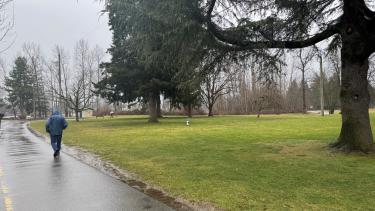
The Brain-Body Connection
True confession: I enjoy physical activity. I start most days with vigorous exercise. I wake up at 5:00 am Monday to Friday so I can be unrushed in my morning ritual, which includes fresh espresso, a scroll through various social media feeds, CBC radio, and yes, a fitness workout.
Occasionally, I must miss a workout for an early morning meeting or unexpected crisis, and on those days, I notice that I do not feel like my best self. I notice this even more as time passes. So, I do my best to prioritize movement. I just feel better. And I think better. And there is research to support that this is the case. Feel free to fact check, but in short, physical activity increases blood flow, activates the brain, lowers anxiety, and improves cognitive function.
Years ago, I became a fan of walking meetings. My colleague Chris Kennedy and I would often take our agenda items outside. We would problem solve, prioritize, and discuss the important issues of the day while walking in the fresh air. We called it, ahem, the walk and talk, and I am a huge proponent. If I am being honest, my best ideas almost never happen when I am sitting in a stuffy office or board room. Knowing this, and valuing both good ideas and creative thinking, why wouldn’t I try to have at least a few of my 15 - 20 minute work conversations outside every week?
Of course, movement, fresh air, and exercise are good for everyone, including our students. When we think about school, many of us still picture students sitting at desks, but the truth is, learning is not something that only happens when you are still and quiet. I love it when I see schools and classrooms embrace physical activity, even when it comes to literacy and numeracy. I saw a French lesson recently where all the desks had been pushed to the perimeter, and students were standing in small groups in the middle of the room, practicing their speaking skills while they gestured and moved about freely, using props and accessing cues posted on the walls of the room. When I asked the students about the experience, many mentioned how they seemed to remember the language “better” than more traditional pen and paper methods.
What if we could improve student success (and our own) by simply weaving more physical activity into how we work and learn? Could it be the case that this one simple change could have such an impact? There is some interesting research around this. While we know movement is good for us physically, it might be more helpful than we think when it comes to memory, processing, and codifying knowledge, which suggests we should do more than just incorporate body movement breaks; we should design more lessons and opportunities that make us move or take us outside. Check out this article from the University of Michigan.
I love to visit our schools and see the innovative ways we configure classrooms and use place-based and play-based learning to spark curiosity and engagement. The human body was not designed to be still and quiet for long periods of time. So, I challenge you, in whatever role you play, to think about how you incorporate movement and physical activity into your day. I would also love to hear any stories from our educators who have experimented with embedding more physical activity into lesson design, and what impacts, if any, you’ve noticed. An elementary school Principal friend of mine had his staff very excited about “physical literacy” and so the school strategically embedded more of it into the school experience. Among the many positive stories, he noted a major decrease in student discipline referrals and issues. Something he had not necessarily anticipated, but it was a welcome bonus.
I encourage us all to consider how we might integrate physical well-being into our daily routines, enhancing both our personal health and our professional effectiveness. By doing so, we not only improve our own lives but also create a more dynamic, engaging, and successful learning experience for our students.
Let's inspire each other and our students to move more, think more creatively, and achieve greater heights. Thank you for your dedication and commitment to making our school district a place where everyone can thrive. And please, if you have a good story to share about your experience with this subject, reach out.